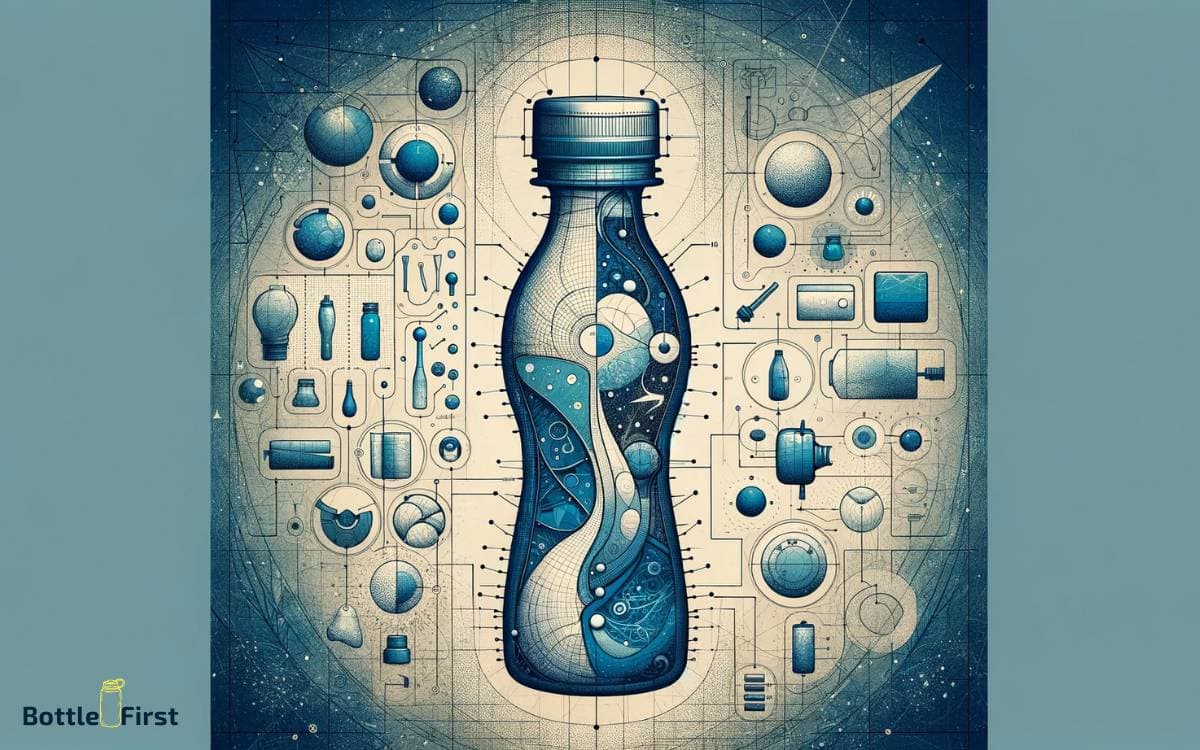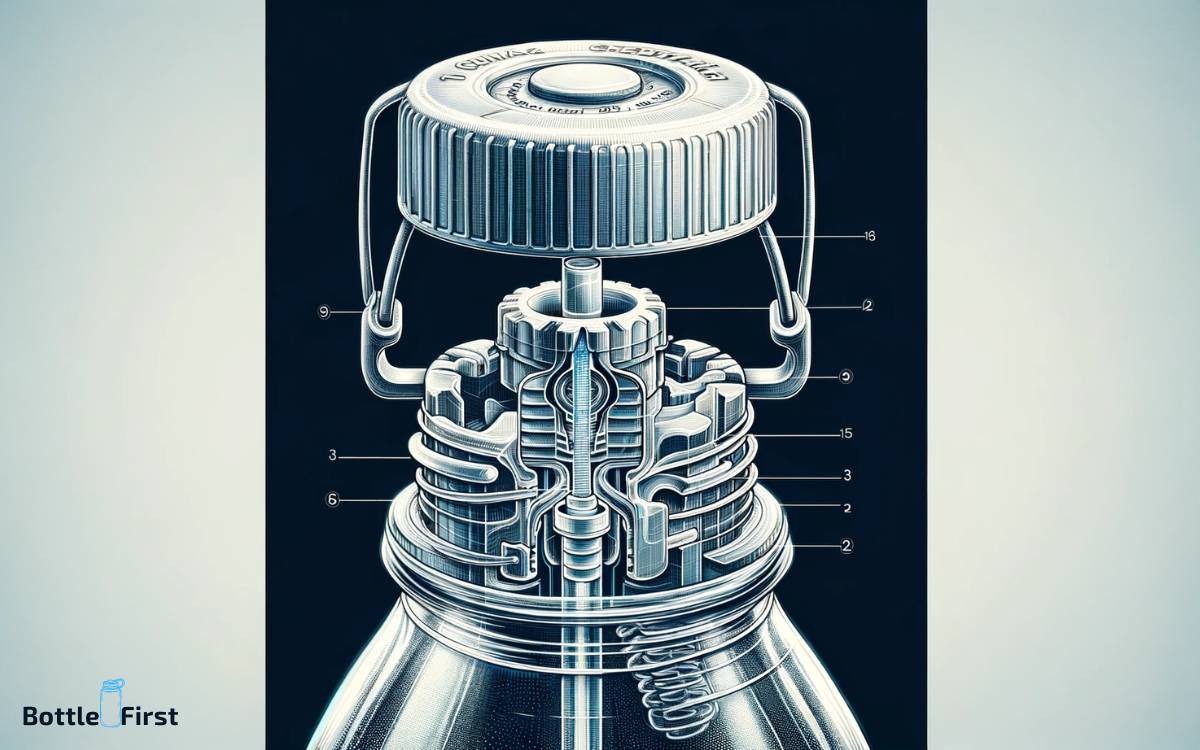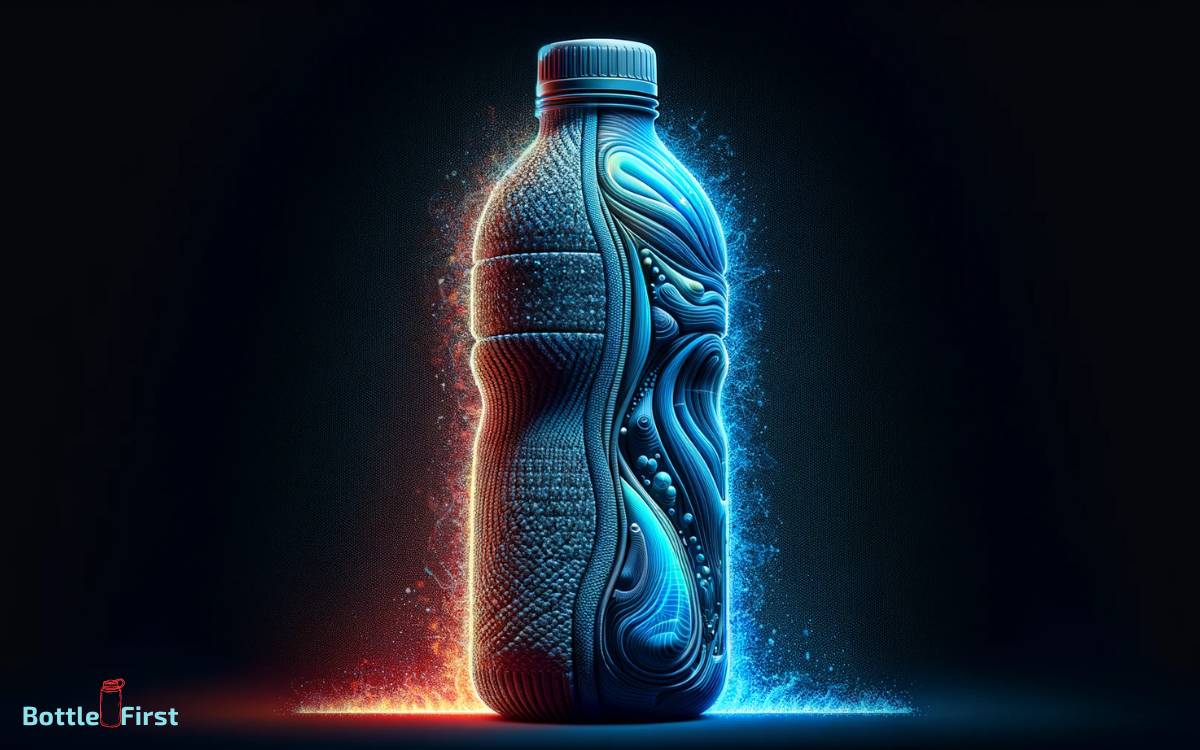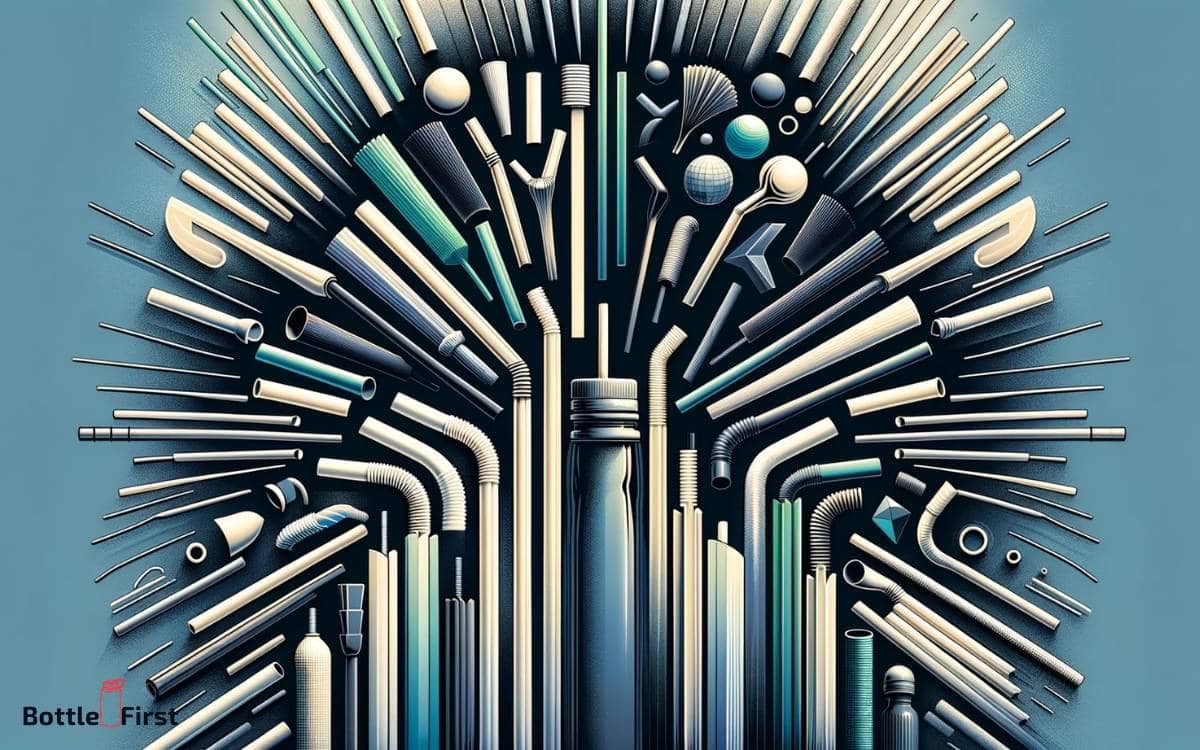Water Bottle Parts Name: Find Out Here!
The main parts of a water bottle typically include the bottle body, the cap or lid, and the nozzle or spout. Some bottles may also feature extra components such as a handle, a straw, or insulation layers.
The bottle body holds the liquid and is typically made from plastic, glass, or stainless steel. The cap or lid secures the top of the bottle to prevent spills and protect the liquid inside from contamination. The nozzle or spout is the part where the liquid is sipped or poured from.
The components of a water bottle work together to provide a practical, portable hydration solution. Understanding these parts can help in maintaining the bottle’s functionality and prolonging its lifespan.
For instance, regular cleaning of the cap or lid and the nozzle or spout can prevent bacterial buildup.
Key Takeaway
Parts and Names of a Water Bottle
| Part Name | Description |
|---|---|
| Cap | The topmost part of the water bottle that can be opened and shut |
| Body | The main section of the water bottle where water is stored |
| Base | The bottom part of the water bottle |
| Mouthpiece | The part from where the water is sipped |
| Handle | The part by which the water bottle is held |
| Seal | The part that ensures the water bottle is leak-proof |
Anatomy Of A Water Bottle
Water bottles come in various shapes, sizes, and materials, but they all consist of certain essential components. Understanding the anatomy of a water bottle can help you choose the right one for your needs.
In this section, we will take a closer look at the major components of a water bottle and their functionality.
Overview Of The Major Components
A water bottle typically consists of the following main parts:
- Cap: The cap is the topmost part of the water bottle that seals the opening. It is designed to prevent leakage and ensure the contents remain secure. Caps come in different types, such as screw-on caps, flip-tops, and straw lids.
- Mouthpiece: The mouthpiece is the part of the water bottle that allows you to drink from it. It can take the form of a simple opening, a spout, or a straw. The design of the mouthpiece influences the ease of drinking and can vary based on personal preference.
- Body: The body is the main section of the water bottle that holds the liquid. It can be made of various materials, including plastic, stainless steel, or glass. The body of the water bottle comes in different shapes and sizes to accommodate different volumes of liquid.
- Handle/strap: Many water bottles feature a handle or strap, which allows for easier carrying and transportation. This component is especially useful for individuals on the go or those engaging in outdoor activities.
- Lid: The lid is a separate piece from the main cap and is responsible for providing a secure closure. It often acts as an additional layer of protection against leakage and can include features like a locking mechanism or a silicone seal.
Understanding The Functionality And Purpose Of Each Part
Here’s a breakdown of the functionality and purpose of each water bottle component:
- Cap: The cap ensures the water bottle remains tightly sealed, preventing any liquid from leaking out. It also protects the mouthpiece from dust, dirt, or other contaminants, ensuring the contents stay clean and safe to drink.
- Mouthpiece: The mouthpiece allows for easy access to the liquid inside the water bottle. It is usually designed with hygiene in mind, providing a smooth surface for drinking without direct contact with the bottle’s body.
- Body: The body of the water bottle holds the liquid and keeps it contained. It is designed to be durable, portable, and lightweight, making it convenient to carry around. The material of the body can impact factors like insulation, ease of cleaning, and overall durability.
- Handle/strap: The handle or strap on a water bottle provides a secure and comfortable grip, allowing for easy carrying and transportation. This component is particularly beneficial for those who frequently take their water bottles with them on hikes, runs, or other activities.
- Lid: The lid contributes to the overall functionality of the water bottle by ensuring a tight and secure closure. It minimizes the risk of accidental spills or leaks, allowing you to confidently carry the bottle in your bag or backpack.
By familiarizing yourself with the various parts of a water bottle and understanding their purpose, you can make an informed decision when purchasing one.
Consider factors like the type of cap, mouthpiece design, body material, and additional features such as handles or straps.
Choosing the right water bottle can enhance your hydration routine and make it more convenient and enjoyable.
Cap And Mouthpiece
A Closer Look At The Cap And Its Features
The cap and mouthpiece are essential components of any water bottle. The cap not only keeps your water secure inside the bottle but also ensures easy access to hydration whenever you need it.
Let’s dive deeper into the cap and explore its features:
Exploring Different Types Of Caps And Their Benefits
Screw-on cap:
- Provides a secure and leak-proof seal for your water bottle.
- Easy to open and close with a simple twist.
- Ideal for activities like hiking and biking where you need quick access to your water.
Flip-top cap:
- Features a hinged top that flips open and snaps shut.
- Allows for easy one-handed operation, perfect for on-the-go hydration.
- Great for sports and workouts, providing a fast and convenient way to drink water without spilling.
Straw lid cap:
- Comes with a built-in straw for effortless sipping.
- Keeps your water easily accessible without the need to tilt your bottle.
- Popular choice for children and people who prefer drinking through a straw.
Spout cap:
- Features a small spout that you can open and close.
- Provides controlled and directed water flow, preventing spills.
- Suitable for activities where you want to take small sips without tilting the bottle.
Push-pull cap:
- Requires a simple push or pull action to open and close.
- Offers quick access to water without having to twist or flip open the cap.
- Commonly found in sports bottles for easy drinking during workouts.
Hydration valve cap:
- Designed for high-performance sports and endurance activities.
- Equipped with a valve that you bite down on to release the water.
- Ensures leak-free and hands-free hydration, making it popular among athletes.
Each type of cap offers its own unique benefits, catering to different preferences and activities. Whether you prioritize convenience, spill-proof design, or hands-free drinking, there is a cap style to suit your needs.
Remember to choose a cap that not only fits your water bottle securely but also provides easy access to your desired level of hydration.
Body And Sleeve
When it comes to water bottles, the body and sleeve are essential components that determine its functionality and durability.
Understanding the construction of the bottle body is crucial to choosing the right water bottle for your needs.
Let’s dive in and explore the different materials used in sleeves to give you a comprehensive understanding.
Exploring The Different Materials Used In Sleeves:
- Plastic: Plastic sleeves are lightweight and often come in a variety of colors and designs. However, they may not offer the same level of insulation as some other materials and are more prone to scratches and dents.
- Neoprene: Neoprene sleeves provide excellent insulation, keeping your beverages hot or cold for longer periods. They are also water-resistant, protecting your bottle from moisture and condensation. Neoprene sleeves are durable and offer a good grip, making them a popular choice for water bottles.
- Silicone: Silicone sleeves are flexible and offer good protection against bumps and scratches. They are non-toxic and can withstand high temperatures, making them safe to use with both hot and cold beverages. Silicone sleeves also provide a comfortable grip and are easy to clean.
- Stainless steel: Stainless steel sleeves are known for their durability and ability to keep beverages cold or hot for extended periods. They offer excellent insulation and are resistant to corrosion, making them a popular choice for outdoor enthusiasts. Stainless steel sleeves also give a sleek and stylish look to your water bottle.
- Glass: Glass sleeves are a popular choice for those looking for a toxin-free option. They are transparent, allowing you to see the liquid inside, and do not retain flavors or odors. Glass sleeves are easy to clean and offer good insulation, keeping your beverages at the desired temperature.
Each material has its own set of advantages and considerations, so it’s important to evaluate your needs and preferences before selecting the right sleeve for your water bottle.
Understanding the construction of the bottle body gives you insights into the different materials used in sleeves.
Plastic, neoprene, silicone, stainless steel, and glass sleeves each offer unique benefits and considerations.
Whether you prioritize insulation, durability, grip, or style, there is a sleeve material that suits your preferences. Choose wisely to enhance your hydration experience.
Lid And Sealing Mechanism
Examining The Different Types Of Lids And Their Sealing Mechanisms
When it comes to water bottles, the lid and sealing mechanism play a crucial role in preventing leaks and maintaining the temperature of the liquid inside.
There are several types of lids available in the market, each with its own unique sealing mechanism.
Let’s take a closer look at some of these options and what factors to consider when choosing the right lid for your water bottle.
Screw-On Lids With Silicone Gaskets
- Screw-on lids are a popular choice for many water bottles as they offer a secure and leak-proof seal.
- These lids typically feature a silicone gasket or o-ring that fits snugly between the lid and the bottle’s opening.
- The gasket acts as a barrier, preventing any liquid from escaping, even when the bottle is tipped or inverted.
- This type of lid is often found in stainless steel and vacuum-insulated bottles.
Flip-Top Lids With Snap Closures
- Flip-top lids provide convenience and ease of use, allowing you to access your drink with a simple flick of the thumb.
- These lids usually have a hinged cap that flips open and snaps shut securely.
- The snap closure ensures that the lid remains tightly sealed when not in use.
- This type of lid is commonly found in plastic water bottles and sports bottles.
Straw Lids With Built-In Straws
- Straw lids have gained popularity for their functionality and practicality, making it easy to drink without unscrewing or flipping open the lid.
- These lids typically have a built-in straw or a straw attachment that extends into the bottle.
- The straw can be retracted and secured with a snap closure when not in use, preventing leaks.
- Straw lids are common in kids’ water bottles and hydration packs.
Factors To Consider When Choosing A Lid
Now that we have explored the different types of lids and their sealing mechanisms, let’s dive into the factors you should consider when selecting a lid for your water bottle:
- Leak-proof: Look for lids that have a reliable sealing mechanism to ensure there are no leaks, especially if you plan on carrying your bottle in a bag or backpack.
- Easy to clean: Consider lids that can be easily disassembled and cleaned, as this will help maintain hygiene and prevent the buildup of bacteria.
- Durability: Opt for lids made from sturdy materials that can withstand daily use and potential drops.
- Ease of use: Choose a lid that is user-friendly and allows for convenient access to your drink, whether through a screw-on, flip-top, or straw mechanism.
- Temperature control: If you prefer to keep your beverages hot or cold, look for lids that provide insulation to help maintain the desired temperature.
Remember, finding the right lid for your water bottle is essential for a hassle-free and enjoyable hydration experience. Consider your needs and preferences when selecting a lid that suits you best.
Drinking Spout And Straw
Exploring The Various Types Of Drinking Spouts And Straws
When it comes to water bottle parts, the drinking spout and straw are essential components that greatly affect the user experience.
There are several types of drinking spouts and straws available, each with its own unique design and functionality.
In this section, we will delve into the various types of drinking spouts and straws commonly found in water bottles.
Drinking Spouts:
Drinking spouts are designed to provide an easy and convenient way to sip beverages from your water bottle.
Here are some key points to consider when exploring the different types of drinking spouts:
- Standard spouts: These are the most common type of spouts, featuring a simple opening that allows you to drink directly from the bottle. They are easy to use and require no additional components. However, they may not be as spill-proof compared to other designs.
- Flip-top spouts: With a hinged lid, flip-top spouts offer a convenient solution for on-the-go sipping. The lid keeps the spout clean and hygienic, while the flip mechanism allows for easy access. However, it’s important to ensure the lid is securely closed to avoid leakage.
- Bite valve spouts: Commonly found in sports water bottles, bite valve spouts feature a self-sealing mechanism that prevents spills and leaks. By biting and sucking on the valve, you can control the flow of liquid. These spouts are ideal for active individuals and athletes.
Straws:
Straws in water bottles offer an alternative way to consume liquids without tilting the bottle.
Let us explore the advantages and disadvantages of different straw designs:
- Fixed straws: These straws are permanently attached to the bottle, providing a hassle-free drinking experience. They are convenient for quick sips and prevent splashes while drinking. However, cleaning and maintenance may be more challenging with fixed straws.
- Detachable straws: Unlike fixed straws, detachable straws can be removed for thorough cleaning. They offer flexibility in terms of length and can be adjusted to fit different bottle sizes. However, they might require extra care to prevent loss or damage.
- Foldable straws: As the name suggests, foldable straws can be folded and stored compactly, making them ideal for travel or space-saving. They are convenient and easy to carry around. However, the folding mechanism should be sturdy enough to prevent leakage.
- Silicone straws: Made of silicone material, these straws are reusable, durable, and eco-friendly. They are often included with water bottles as a sustainable alternative to single-use plastic straws. However, it’s important to ensure proper cleaning and maintenance to prevent bacteria build-up.
By understanding the different types of drinking spouts and straws available, you can choose the one that best suits your personal preference and lifestyle.
Whether you opt for a standard spout, flip-top spout, bite valve, fixed straw, detachable straw, foldable straw, or silicone straw, each design offers its own unique advantages and disadvantages.
Consider your needs, convenience, and maintenance requirements to select the perfect drinking spout or straw for your water bottle.
Cheers to staying hydrated!
Conclusion
Understanding the various parts of a water bottle is key to maximizing its use and ensuring its longevity.
From the lid to the body, each component plays a crucial role in how the bottle functions. The lid, with its spout or straw, helps regulate the flow of liquid and prevents spills.
The body, often made of durable materials like stainless steel or bpa-free plastic, keeps the liquid insulated and fresh. The sleeve adds an extra layer of protection and grip, while the filter helps purify water on the go.
Cleaning these parts regularly and replacing any worn or damaged components will help maintain a safe and efficient water bottle.
By familiarizing yourself with the different parts and their functions, you can make a well-informed choice when selecting a water bottle that suits your needs and lifestyle.
So, drink up and stay hydrated!







